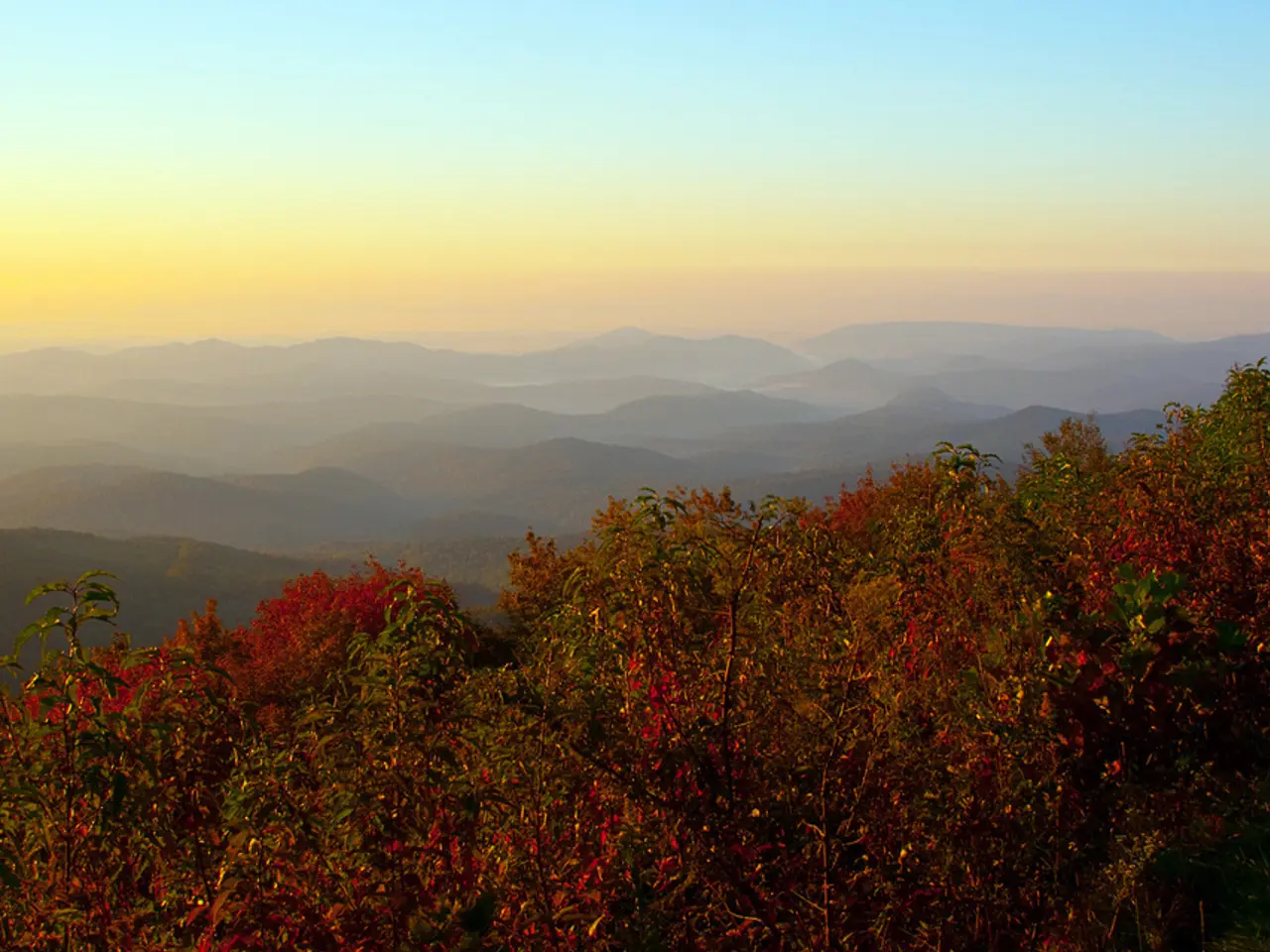Worthy Pacific Northwest Hiking Spot for Your Travel Plans
Exploring the Volcanic Landscape of Mount St. Helens in the Pacific Northwest
Nestled in the heart of the Pacific Northwest (PNW), the Cascade Mountain Range offers a unique wild playground for outdoor enthusiasts. One of its standout attractions is Mount St. Helens, a National Volcanic Monument that has become a top natural wonder in the region.
Mount St. Helens, once known as Louwala-Clough to local Indigenous communities, meaning "smoking mountain," underwent a significant transformation in 1980. The eruption reshaped the landscape, creating a unique combination of volcanic scars, wildflower-filled meadows, and turquoise lakes.
For those seeking to explore this volcanic landscape and its recovery, Mount St. Helens offers several scenic hiking trails and geological wonders.
Scenic Hiking Trails at Mount St. Helens
The Eruption Trail, a short and easy half-mile hike beginning at the Johnson Ridge Observatory, offers educational information about the 1980 eruption. Visitors can gain about 25 feet in elevation while enjoying panoramic views of the volcano's aftermath.
The Ape Cave Lava Tubes, located on the southern side of Mount St. Helens, are two lava tube trails. The Lower Cave is an easy 1.5-mile out-and-back hike, ideal for families, with minimal elevation gain. The Upper Cave, on the other hand, is more challenging, requiring climbing over lava boulders and totaling about 4.5 miles when including the walk back to the parking lot. Visitors should note that reservations are required to navigate through the dark, rocky passageways of the Ape Cave, and it maintains a chilly 42°F temperature.
The Loowit Trail, a very challenging loop trail that circumnavigates Mount St. Helens, traverses deep gullies and pumice fields left by the eruption. With around 6,000 feet of elevation gain, including approach trails, the Loowit Trail offers hikers the opportunity to see vast pumice fields, lava terrain, and wildflowers such as those near Pumice Butte. The trail connects with the Ape Canyon Trail and passes through the Plains of Abraham and Windy Pass.
The Lava Canyon Trail, a thrilling adventure, offers a nearby waterfall and crosses a suspension bridge and descends a 30-foot ladder into a gorge carved by lava flows.
Exploring Geological Wonders at Mount St. Helens
Key geological features include lava tubes formed from past eruptions in Ape Cave, deep pumice fields and gullies from the 1980 blast as seen on the Loowit Trail, and Lava Canyon's cascade of waterfalls cut into bedrock exposed by the volcanic debris flow.
The Hummocks Trail, a 2.3-mile loop, winds past ponds and showcases regenerating plants and wildlife on the west side of Mount St. Helens.
Accessing Mount St. Helens
Mount St. Helens is located in Skamania County and is about a 3.5-hour drive from Seattle, Washington, or 1.5 hours from Portland, Oregon. Visitors can access the Johnson Ridge Observatory, the starting point for several trails, including the Eruption Trail and the Loowit Trail. The Forest Learning Center and Johnston Ridge Observatory's visitor centers offer interactive displays and films about the mountain's history, the 1980 eruption, and the geology of the area.
Seaquest State Park, a 475-acre forested park near Mount St. Helens, offers hiking, camping, biking, and kayaking, with mountain views and close proximity to the Mount St. Helens Interpretive Center and Silver Lake boardwalk trail over wetlands.
For those seeking a serene lake formed in the eruption's wake, the Lakes Trail, a 9-mile round-trip, offers a challenging yet rewarding hike.
Mount St. Helens is best explored by car during the summer when trails are snow-free. Whether you're an experienced hiker or a family looking for a fun day out, the volcanic landscape of Mount St. Helens offers diverse ways to experience its unique beauty.
These travel guides suggest that the volcanic landscape of Mount St. Helens, a standout attraction in the Pacific Northwest, offers a lifestyle immersed in nature for travelers. Scenic hiking trails such as the Eruption Trail, Ape Cave Lava Tubes, Loowit Trail, Lava Canyon Trail, and Hummocks Trail provide opportunities to explore geological wonders, the aftermath of the 1980 eruption, and its regenerating ecosystem.




